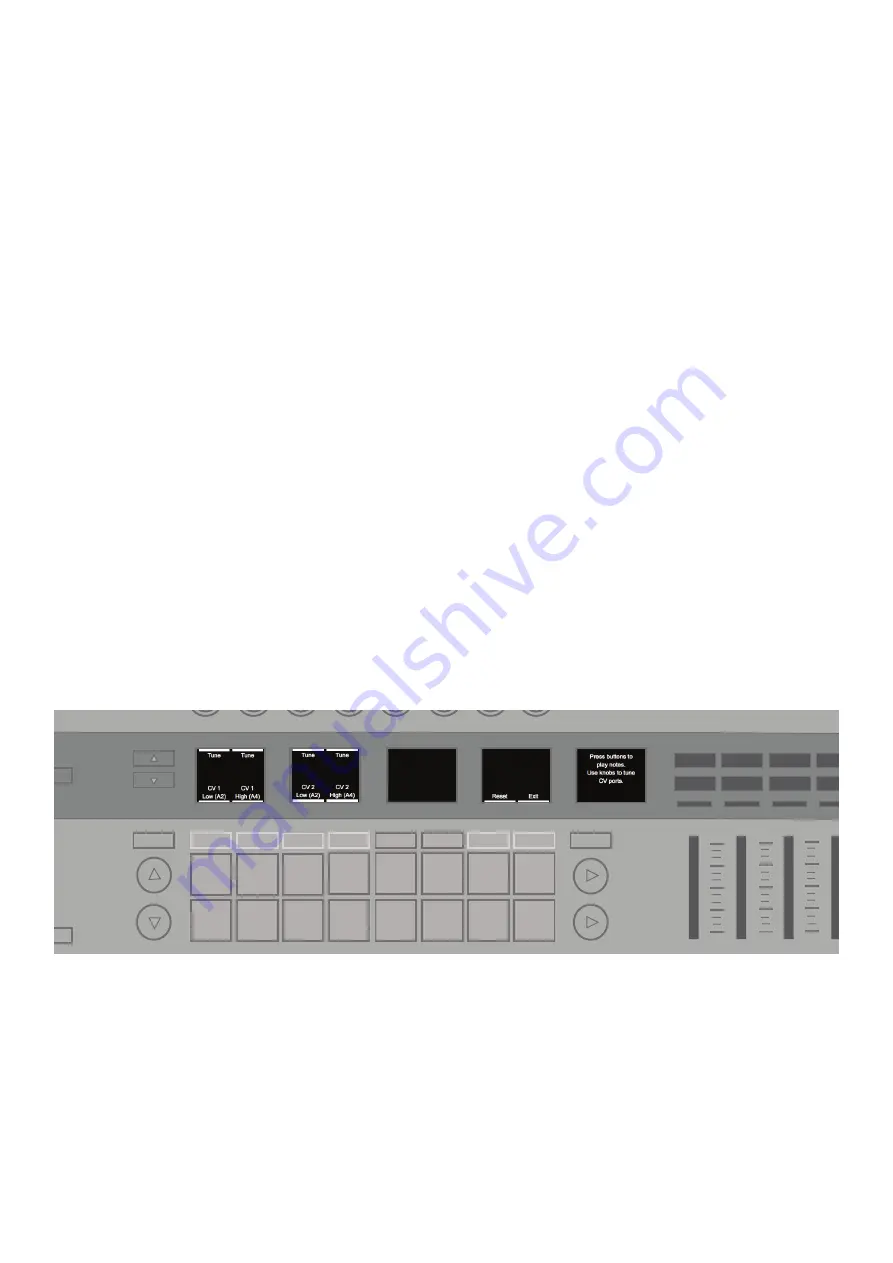
•
Faders: Pickup is on for faders, but off for the Mod Wheel.
•
Mod Wheel: Pickup is on for the Mod Wheel but off for faders.
When pickup is on for faders/Mod Wheel, values will not be sent from that con-trol until the physical position of the
control matches (or passes) the previous value. This behaviour prevents sudden jumps in the value after switching
be-tween Parts, for example. The default value for these controls will be at the lowest position (i.e. fader all the way
down).
Please note that the SL MkIII’s fader pickup behaviour does not apply when us-ing InControl. The controller will there-
fore adopt the pickup behaviour of HUI or your DAW.
Global Settings, Page 2: Analogue Settings
Press the down arrow to the left of the screens to reveal more Global options, as described in the following sections.
E.
Clock Out PPQN
When the Transport is running, ‘clock pulses’ send for each quarter note via the analogue clock out. How many pulses
are sent is determined by this analogue clock setting in PPQN (Pulse Per Quarter Note). PPQN can be set to 1, 2 (de-
fault), 4, 8 or 24.
F.
CV Mod 1 Range and CV Mod 2 Range
These two settings allow you to specify the output voltage of each mod port. Available ranges are ‘-5 to 5V’ or ‘0 to
5V’. Any CC messages directed to the mod port will be mapped to one of these ranges.
G.
CV Mod 1 CC and CV Mod 2 CC
You can give each Mod port a specifi c CC number, which you can set individually for each port using the rotary knobs
above ‘Mod 1 CC’ and ‘Mod 2 CC’. When a message sends with this CC number using the surface, Sequencer auto-
mation, or from external MIDI to a part that routes to a CV port, this will control the CV Mod output.
H.
CV Calibration
The CV Pitch output ports may need calibrating in order to precisely represent the pitch range. Press the soft button
under ‘Calibrate’ to enter calibration mode.
1.
To calibrate a CV Pitch port, fi rst press the soft buttons under ‘CV 1 Low’ or ‘CV 2 Low’. Doing so will set the
voltage of the port to approximately 220 Hz (A2). You will need to connect the port to a sound source to either tune by
ear or use a tuner. Otherwise, you can connect the port directly to an oscilloscope or measuring device to verify the
tuning.
2.
2.
Use the Tune knob directly above to increase or decrease the volt-age and fi ne tune the output until it
matches 220 Hz exactly.
3.
Next, press the soft buttons under the ‘CV 1 High’ or ‘CV 2 High’ and do the same for 880 Hz (A4).
Tempo
INCONTROL
Global
Shift
Zones
Sequencer
Latch
Arp
Scales
Sessions
Patterns
Steps
Save
Duplicate
Clear
Grid
Options
Pitch
Modulation
Octave
Transpose
Track
_
+
Templates
Expand
Summary of Contents for SL MkIII
Page 1: ......
















































